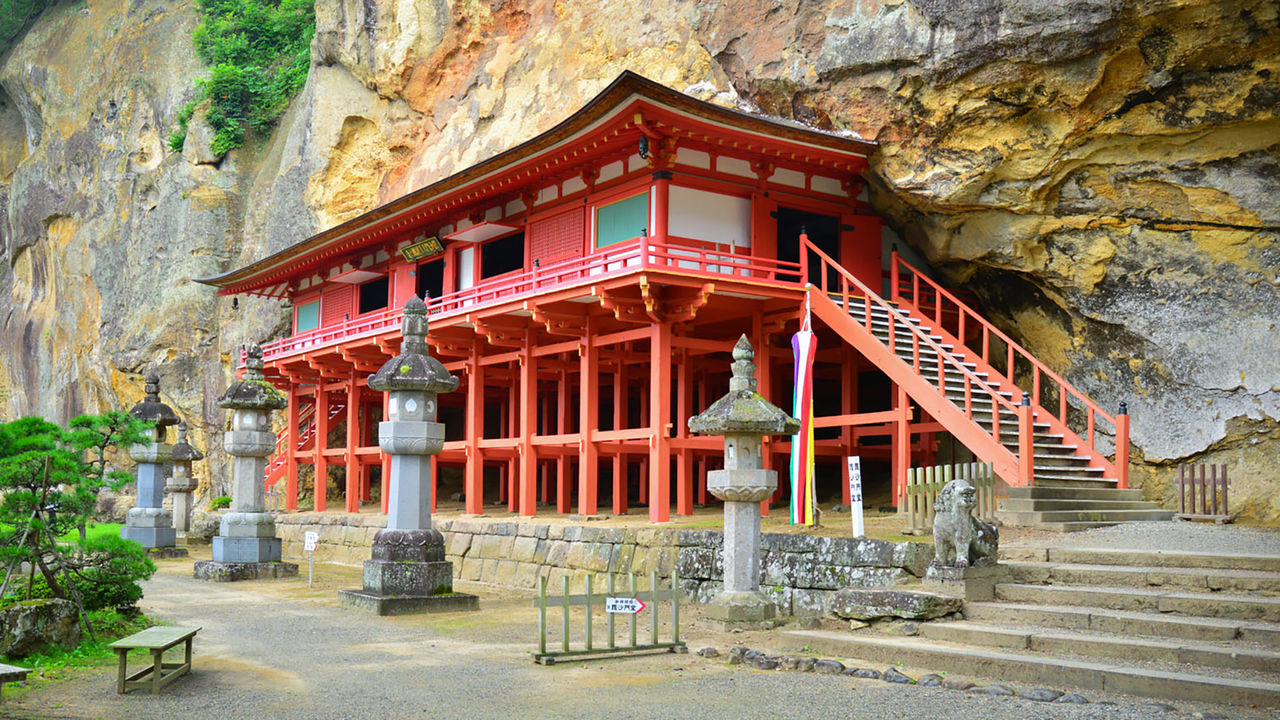
Hiraizumi’s Halls in Memory of the Lords of Iwate’s Past
Guideto Japan
- English
- 日本語
- 简体字
- 繁體字
- Français
- Español
- العربية
- Русский
In Memory of a Warrior: Takadachi Gikeidō Hall
As a young boy, Minamoto no Yoshitsune (1159–89)—half-brother of Minamoto no Yoritomo, founder of the Kamakura shogunate—was forced to flee after the death of their father Yoshitomo in the Heiji civil war (1159–60). Yoshitsune sheltered at Kuramadera temple in the northern part of Kyoto for some time but ultimately decided that religious life was not for him. After coming of age, he left Kyoto, traveling north to the Tōhoku region and settling in Hiraizumi under the protection of Hidehira, head of the Ōshū Fujiwara clan.
Yoritomo, banished from the capital in 1180, vowed to vanquish the Taira clan that had expelled him, and Yoshitsune hurried to his side from Hiraizumi. He battled on the front lines in place of Yoritomo, who was occupied with establishing his military government in Kamakura, and defeated the Taira at the Battle of Dannoura in 1185. But when he angered Yoritomo by failing to seek his permission before accepting an official rank at the imperial court, Yoshitsune retreated to Hiraizumi, where he once again availed himself of Hidehira’s protection.
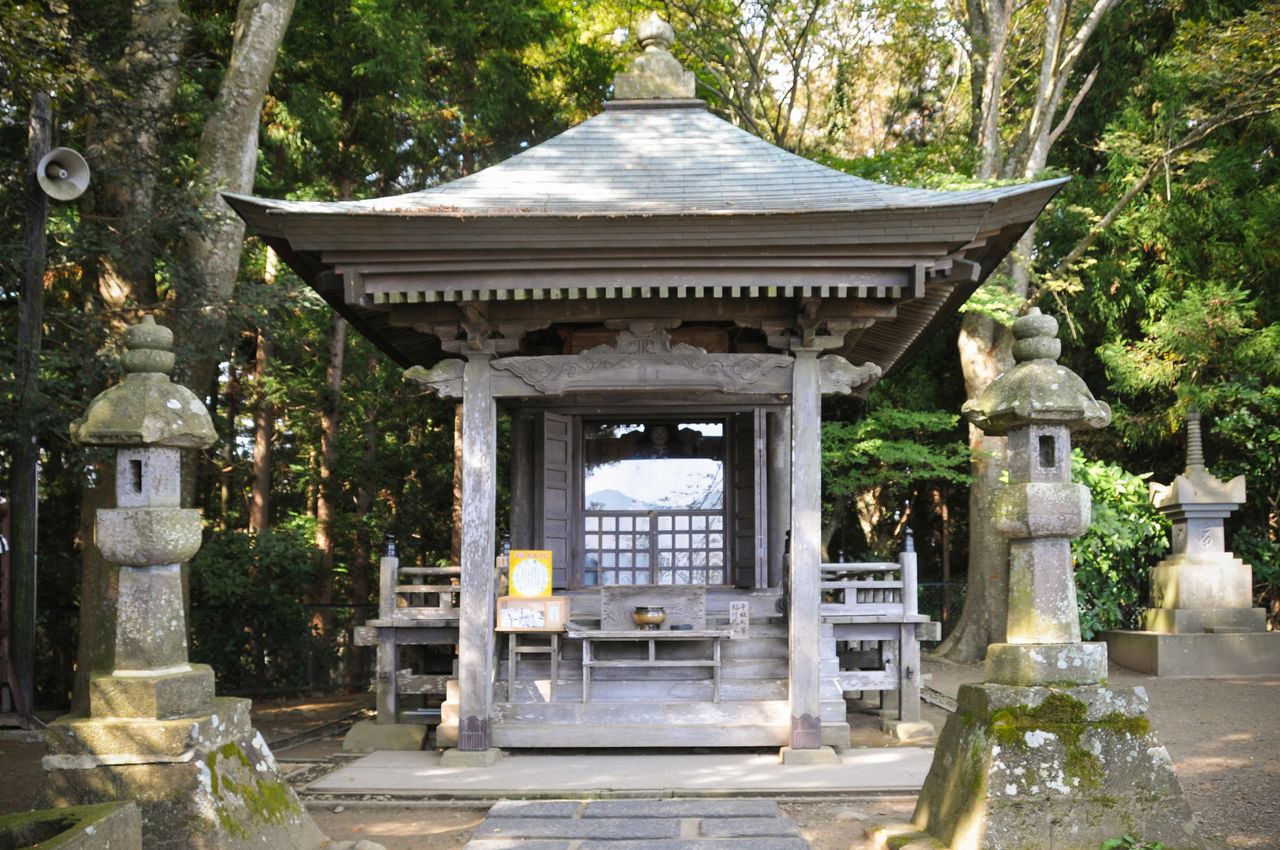 Haiku poet Matsuo Bashō composed the famous poem, “Summer grasses— / all that is left to us now / of warriors’ dreams,” when he visited Takadachi in 1689.
Haiku poet Matsuo Bashō composed the famous poem, “Summer grasses— / all that is left to us now / of warriors’ dreams,” when he visited Takadachi in 1689.
Yoshitsune lived at Koromogawa-no-tachi, a residence given to him by Hidehira. The structure stood on a hill called Takadachi overlooking the Kitakami River. On his deathbed in 1187, Hidehira made his sons promise that they would give Yoshitsune the rank of general and fight together with him against Yoritomo.
But Hidehira’s heir, Yasuhira, pressured by Yoritomo to turn Yoshitsune over to him, betrayed Yoshitsune in 1189, destroying him and his entire family. Despite the fact that Yasuhira had sided with Yoritomo, Yoritomo’s army attacked Hiraizumi the same year, precipitating the end of the Ōshū Fujiwara and the golden age of Hiraizumi.
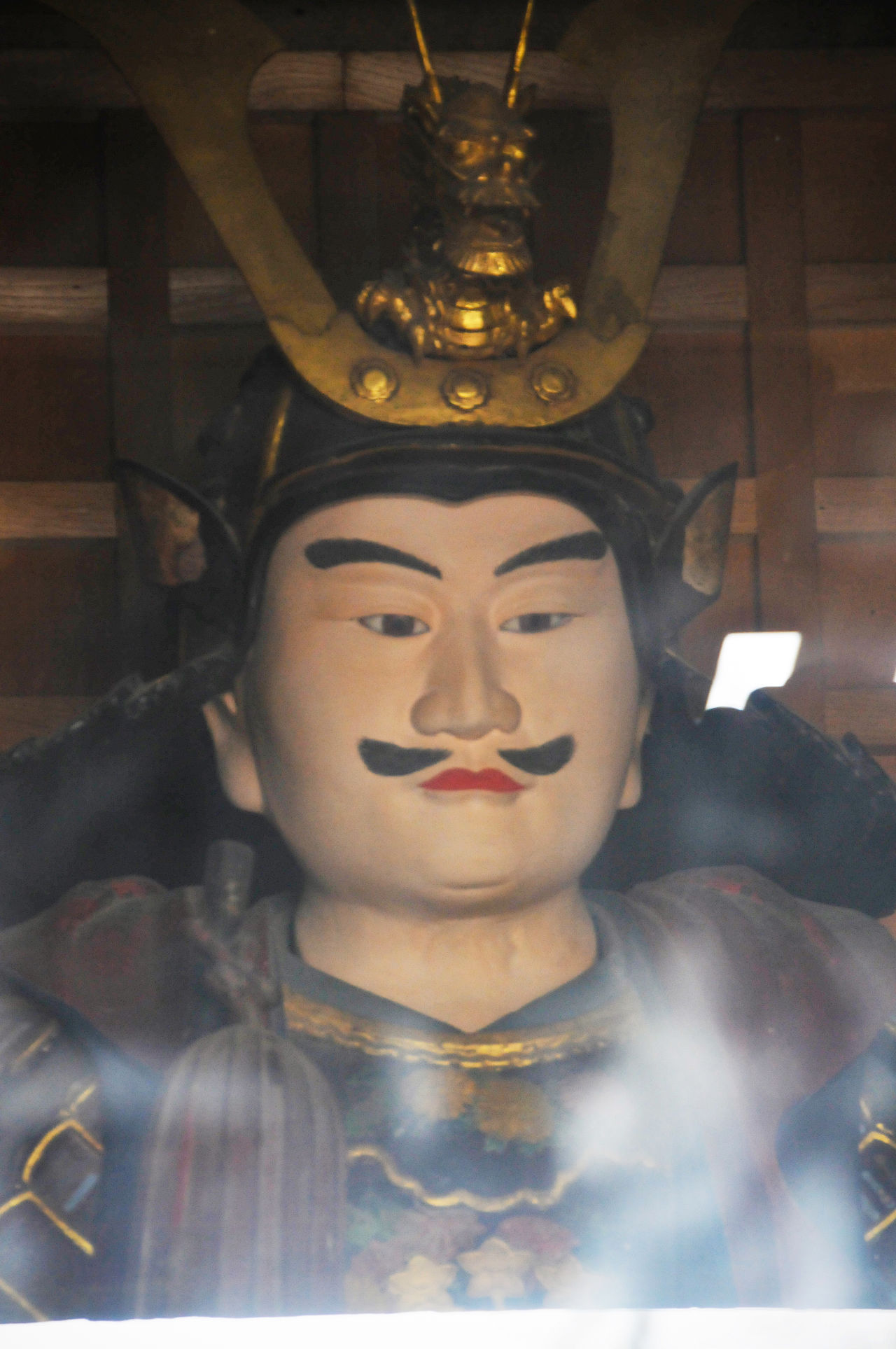 A likeness of Minamoto no Yoshitsune.
A likeness of Minamoto no Yoshitsune.
Today, Takadachi is known as Hangandate or Hōgandate. In 1683, the fourth daimyō of the Sendai domain, Date Tsunamura, erected the Gikeidō Hall in memory of Yoshitsune, who had spent his last days in Hiraizumi. The structure contains a wooden likeness of Yoshitsune and is managed as an auxiliary site of the temple Mōtsūji.
DATA
- Address: 14 Yanaginogosho, Hiraizumi, Iwate Prefecture
- Access: 5 min by taxi from JR Hiraizumi station
- Tel.: 0191-46-3300
- Hours: 8:30 am to 4:30 pm (4 pm in winter)
- Open year-round
- Admission: Adults ¥200, elementary and junior high school students ¥50
The Hall at the Cliff Face: Takkoku no Iwaya Bishamondō
 The Takkoku no Iwaya Bishamondō hall, built in kengai-zukuri gallery style.
The Takkoku no Iwaya Bishamondō hall, built in kengai-zukuri gallery style.
Takkoku no Iwaya Bishamondō was erected in memory of the generalissimo Sakanoue no Tamuramaro’s victory over the Emishi natives of the Tōhoku region. Modeled after the gallery of Kyoto’s Kiyomizudera temple, the building was erected in 801, hugging the rock face rising behind it. The hall originally enshrined 108 statues of Bishamonten, the god of warriors.
The structure, which burned down several times over the centuries of its existence, was rebuilt most recently in 1961. Today it houses 30 figures of Bishamonten created in various periods.
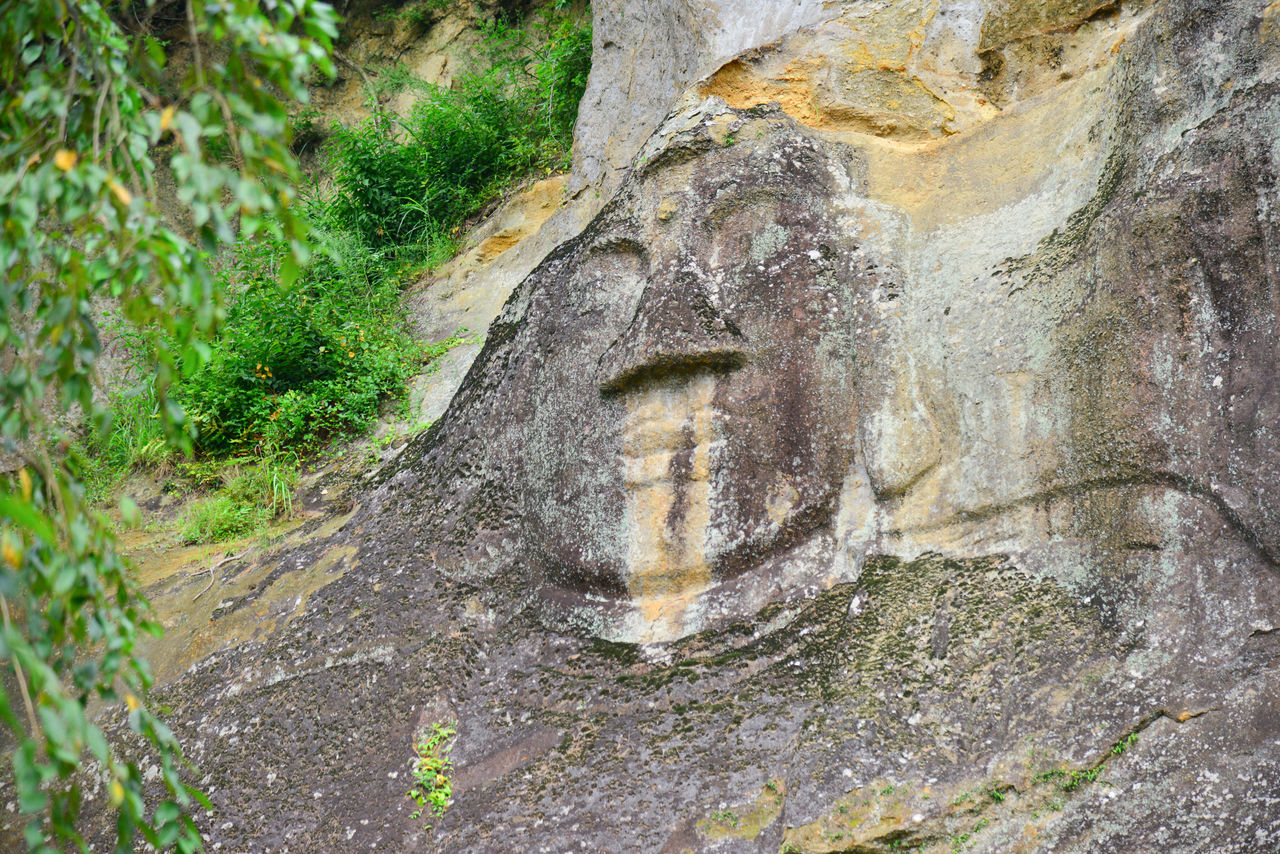 A large image of Buddha carved into the rock face.
A large image of Buddha carved into the rock face.
To the west of the Bishamondō hall is a 3.6-meter-high image of Buddha carved into the rock face. It is said to represent either Dainichi Nyorai (Vairocana) or Amida Nyorai (Amitābha). Minamoto no Yoshiie, great-grandfather of Yoritomo and Yoshitsune, had this carved to comfort the souls of warriors fallen in battle in the latter half of the eleventh century.
DATA
- Address: 16 Aza Kitazawa, Hiraizumi, Hiraizumi, Iwate Prefecture
- Access: 10 min by taxi from JR Hiraizumi station
- Tel.: 0191-46-4931
- Hours: 8 am to 5 pm (4:30 pm in winter)
- Open year-round
- Fees: Adults ¥300, junior high and high school students ¥100
Nearby attraction: Remains of the Honedera-mura Shōen Estate
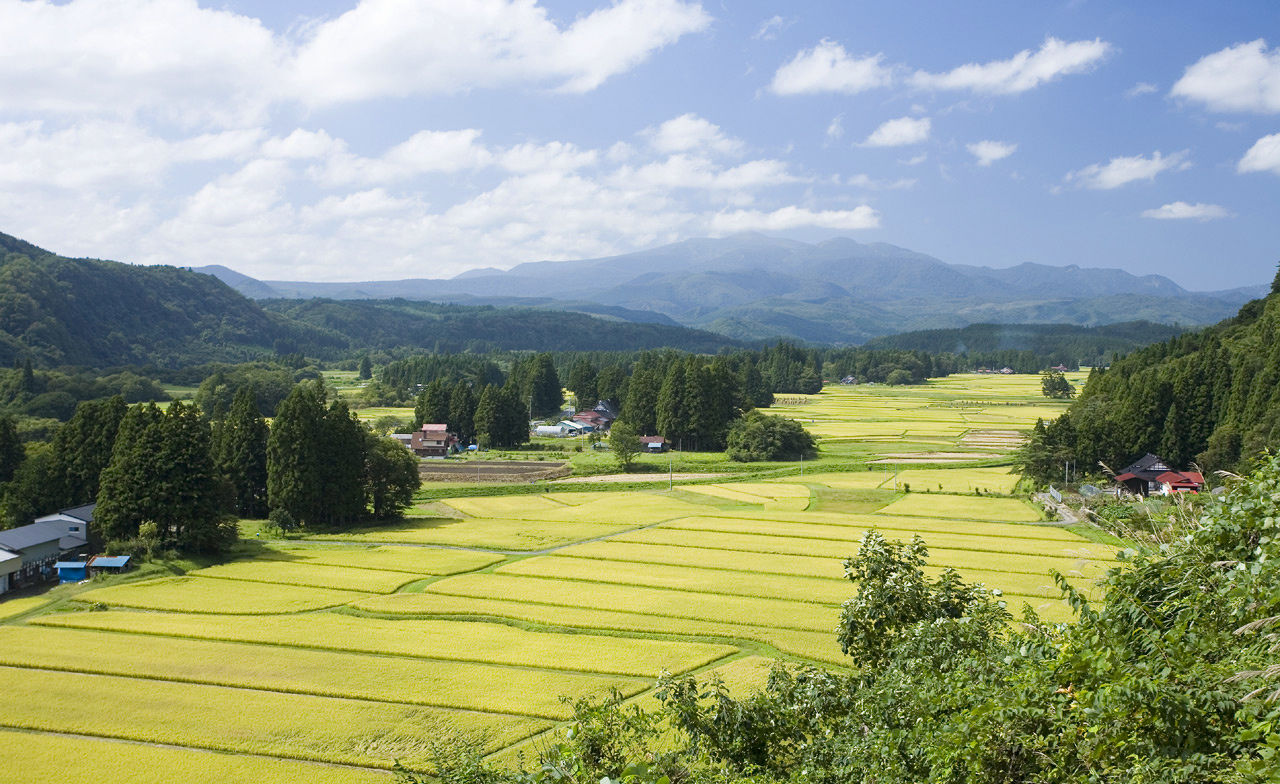 The unchanging medieval-period landscape at the remains of the Honedera-mura shōen estate. (Photo courtesy of Iwate Prefecture.)
The unchanging medieval-period landscape at the remains of the Honedera-mura shōen estate. (Photo courtesy of Iwate Prefecture.)
The Hondera district, about 30 minutes by car from Hiraizumi, in Ichinoseki’s Genbi-chō, was formerly known as Honedera-mura. This area was part of the landholdings of the temple Chūsonji for about 300 years, from the late Heian (794–1185) to the early Muromachi (1333–1568) periods.
Two medieval-period picture scrolls owned by Chūsonji depicting the district at the time show that the area’s appearance has remained virtually unchanged since then. The tranquil rural landscape and its winding watercourses are the precious remains of an estate from centuries ago.
DATA
- Address: Hondera district, Genbi-chō, Ichinoseki, Iwate Prefecture
- Access: From JR Ichinoseki Station, board an Iwate Kōtsū bus bound for Genbikei, Mizuyama, and Sukawa Onsen. Get off at Tsuka (Honedera-mura Shōen Kōryūkan-mae); just over 30 min.
- Tel.: 0191-33-5022 (Honedera-mura Shōen Kōryūkan)
- Hours: the Honedera-mura Shōen Kōryūkan visitor center is open from 9 am to 5 pm. No entry to fields or farms without permission.
- Closed Tuesdays and year-end/New Year holidays
- Fee: Free of charge
(Originally written in Japanese. Banner photo: The Takkoku no Iwaya Bishamondō, sitting snugly against a cliff. Reporting and text by Shoepress.)